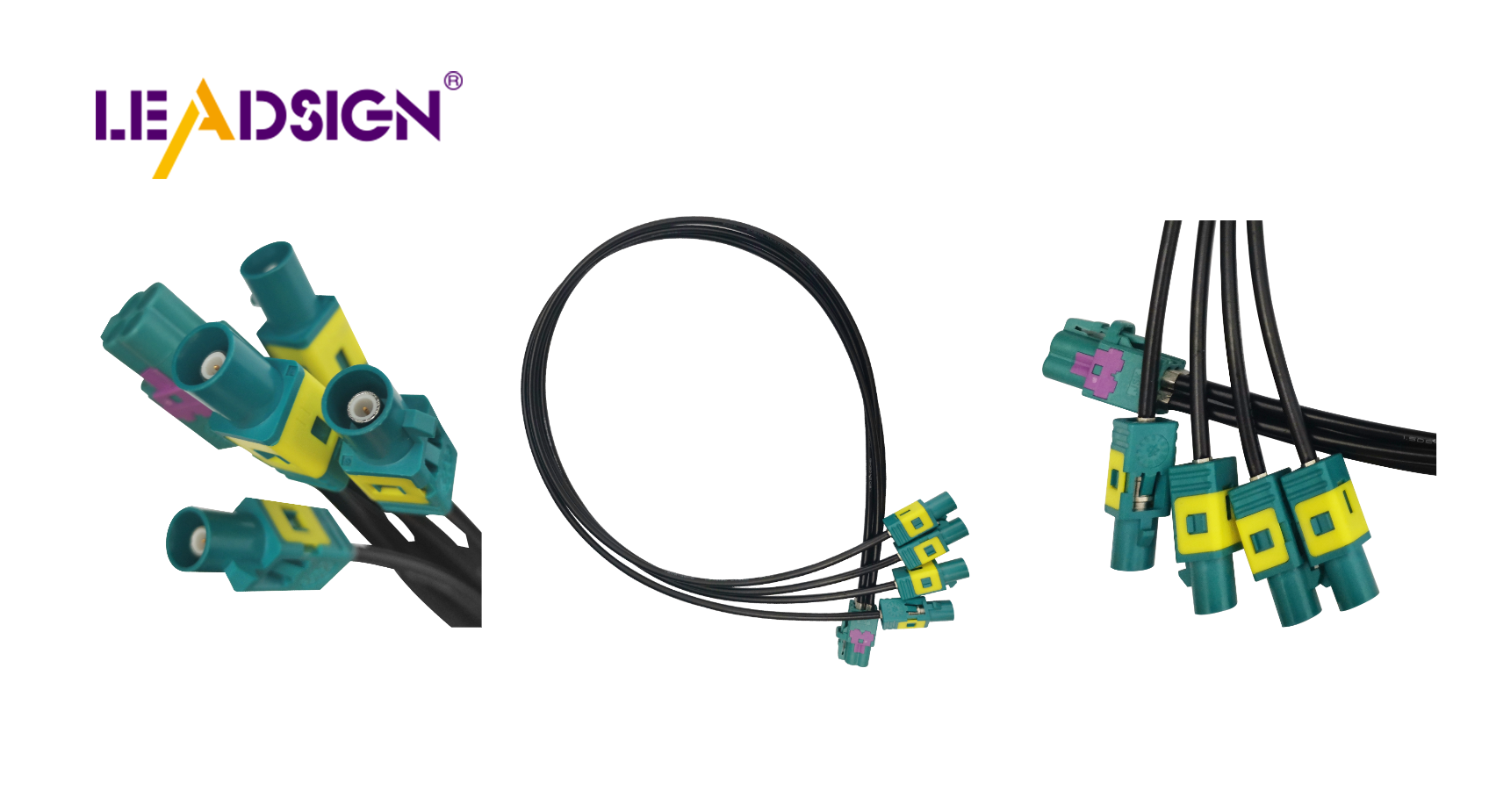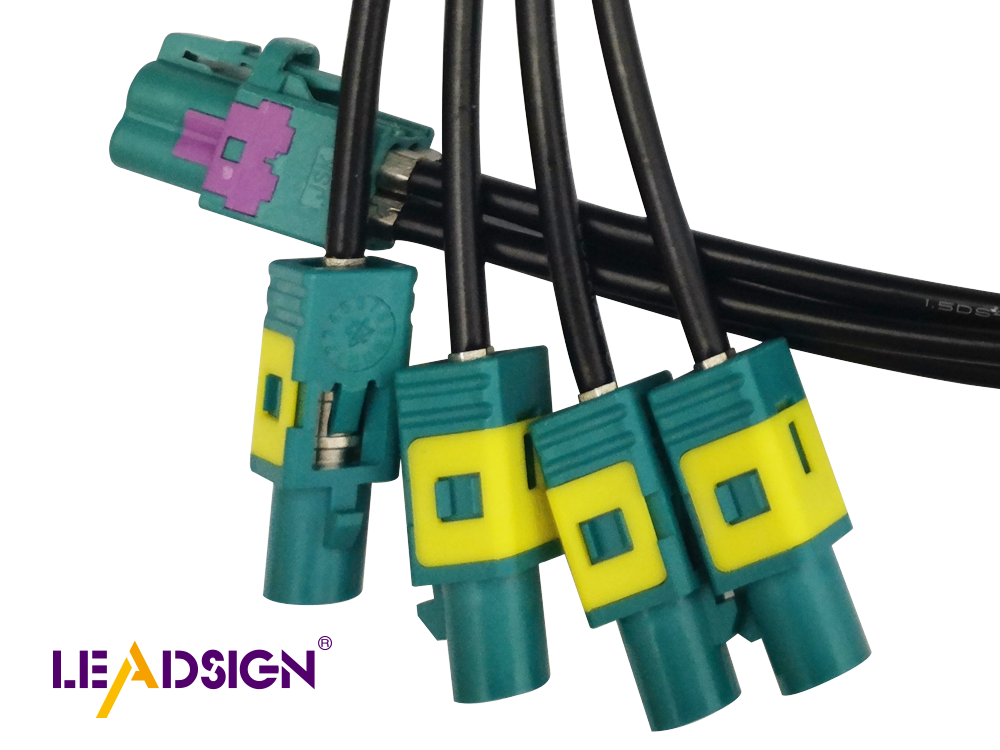Understanding Mini Coaxial Cable Specifications and Features

Coaxial cables are important for sending data. They carry high-frequency signals with little interference. Mini coaxial cables are now popular. They are small and flexible, perfect for new tech like 5G and self-driving cars. Knowing their features helps choose the right one. As industries change, we need efficient, space-saving solutions. This makes mini coaxial cables very important today.
Basics of Mini Coaxial Cables

What are Mini Coaxial Cables?
Mini coaxial cables are special wires for sending high-frequency signals. They are smaller and bend more easily than regular coaxial cables. This makes them great for tight spaces where bending is needed. Mini coaxial cables have connectors made for wireless, GSM, and GPS systems. These wires keep signals strong and reduce interference, which is important in today's tech.
Definition and General Characteristics
Mini coaxial cables have a center wire, an insulating layer, a metal shield, and an outer cover. The center wire is usually copper or silver-coated copper for good conductivity. The insulating layer, often foam polyethylene, helps keep the signal clear by lowering capacitance. The metal shield, made of foil and braided copper, stops signal loss and interference. These cables come in different sizes like 36 AWG to 46 AWG, affecting how they bend and their use.
Comparison with Standard Coaxial Cables
When you look at mini coaxial cables next to standard ones:
Size and Flexibility: Mini coaxials are thinner and bend easier for small spaces.
Connector Compatibility: Most RF connectors fit many uses but mini ones need special connectors for things like 5G systems.
Industry Standardization: Unlike regular coaxials, few mini board-to-board connectors meet industry standards except some like SMP3/SMPS/G3PO.
Common Uses and Applications
Mini coaxials are used widely because they send high-frequency signals well with little interference.
Industries Utilizing Mini Coaxial Cables
Many fields depend on mini coaxials:
Telecommunications: They are key in wireless systems for steady data flow. 17 - Automotive: In cars, they help with self-driving features.
Medical Devices: Used in medical tools to send accurate data.
Specific Applications and Benefits
Mini coaxials give many perks in certain uses:
5G Technology: They allow fast data moves needed for 5G networks.
GPS Systems: Ensure precise signals in GPS gadgets.
Space-Saving Solutions: Their small size fits well in tiny electronics.
Important Details of Mini Coaxial Cables
Electrical Details
Impedance and Signal Flow
Mini coax cables help send signals well. They usually have 50 ohms impedance. This keeps signals moving smoothly without bouncing back or losing strength. It makes them great for high-frequency uses like phones and cars.
Frequency Range and Speed
These cables can work up to 20 GHz. This means they can handle lots of data fast, perfect for things like 5G and smart car systems. The wide range lets them manage different speeds easily.
Physical Details
Cable Size and Bending
Mini coax cables are small, about 1.37mm wide. This size helps them bend easily and fit in tight spots, which is good for new gadgets with little space.
Materials and Strength
These cables are made from strong stuff. The inside wire is silver-coated copper for good signal flow. The outside has FEP insulation that lasts long and handles tough conditions well. A tinned copper shield stops outside noise, keeping signals clear.
Features of Mini Coaxial Cables
Performance Features
Signal Strength and Noise Control
Mini coax cables keep signals strong. They work well over long distances. This is important for phones and cars where data must be right. The cables have many layers like foil and copper braid. These layers stop outside noise, keeping signals clear. So, mini coax cables work well even with lots of interference around.
Heat and Weather Resistance
Mini coax cables handle tough conditions. They use materials that resist heat and weather changes. The outer layer is often FEP, which is strong and heat-proof. This makes them good for outdoor use in cars where temperatures change a lot. A study in Connector Supplier shows they work well even when it's hard, keeping data steady.
Design Features
Connector Types and Usefulness
Mini coax cables have different connectors for many uses. These fit with lots of devices and systems. Common ones are straight, right-angle, and PCB connectors. This lets people pick the best one for their needs. The connectors hold tight to stop signal loss, making data move smoothly.
Custom Choices and Differences
Companies let you customize mini coax cables for special needs. You can pick cable lengths, connector types, or shielding materials. This helps industries like telecoms, cars, or medical tools get what they need exactly right. Customizing makes sure the cables fit perfectly, using space well while working great.
Picking the Right Mini Coaxial Cable
Choosing the right mini coax cable means knowing what you need. This part helps you think about important things and common questions.
Things to Think About
Needs for Your Use
First, know what your job needs from a mini coax cable. Different jobs need different things. For example, phone systems need cables for fast data. Cars might need strong cables that handle weather. Industry Experts say we want smaller and faster cables now, so pick ones that can do this. Different jobs need different things.
Frequency Range: Make sure the cable works at the needed frequency.
Impedance: Match the cable's impedance with your system to keep signals clear.
Environmental Conditions: Think about where it will be used, like hot or wet places.
Money and Value
Money matters when picking a cable. Cheap isn't always best. Good cables cost more but last longer and work better.
Initial Cost vs. Long-term Benefits: Spending more now might save money later on fixes.
Customization Needs: Custom cables cost extra but fit special needs better.
FAQs and Common Concerns
Clearing Up Mistakes
People often get mini coax cables wrong, picking the wrong one. A big mistake is thinking all are alike. Each has its own job. Industry Experts say many connectors fit many uses, but not all are right for everything.
Misconception: All mini coaxial cables are alike.
Reality: Each has special features for certain jobs.
Tips from Experts
Experts have advice to help pick the right cable. Knowing tech details and asking pros can help make good choices. Pick the right cable.
Consult with Experts: Talk to pros to learn about the best cables.
Review Technical Specifications: Check the datasheet to see if it fits your system.
Consider Future Needs: Think ahead about new tech and choose cables that can upgrade later.
By thinking about these points and fixing mistakes, you can pick the best mini coaxial cable for your job, making sure it works well and lasts long.
Mini coaxial cables are important for today's technology. They help in robotics, security cameras, and wireless systems. Picking the right cable is key for good performance. Think about what you need, like frequency and weather conditions. By using them well, people can get the most out of these cables in our tech-focused world.
See Also
Exploring the Significance of FAKRA Coaxial Cable in Cars
Discovering the Flexibility and Advantages of FAKRA Cable Connectors
Harnessing the Strength of FAKRA Coaxial Cable

